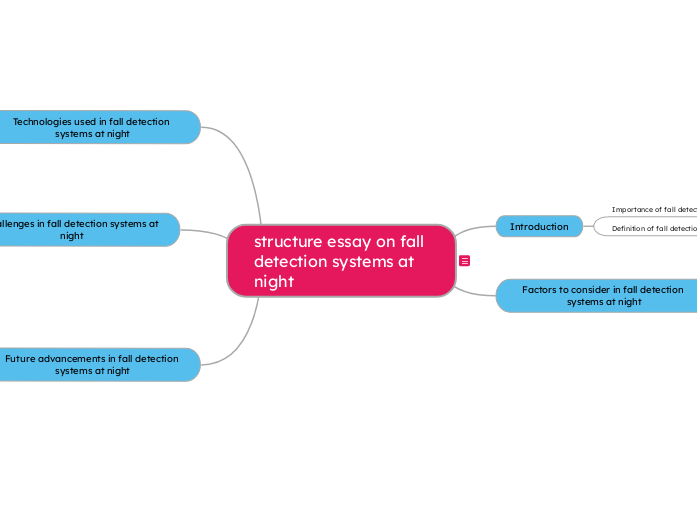structure essay on fall detection systems at night
Introduction
Importance of fall detection systems at night
Definition of fall detection systems
Factors to consider in fall detection systems at night
Ambient lighting conditions
Importance of adequate lighting
Impact of low lighting conditions on accuracy
Noise levels
Effects of noise on fall detection accuracy
Considerations for minimizing false alarms
Technologies used in fall detection systems at night
Infrared (IR) technology
How IR technology works for fall detection
Advantages and limitations of IR technology
Motion sensor technology
How motion sensors detect falls at night
Pros and cons of motion sensor technology
Challenges in fall detection systems at night
Differentiating between falls and other movements
Identifying characteristic patterns of falls
Overcoming challenges in distinguishing falls from normal activities
Addressing false alarms
Causes of false alarms in fall detection systems at night
Strategies for minimizing false alarms
Future advancements in fall detection systems at night
Integration with artificial intelligence (AI)
How AI can enhance fall detection accuracy
Potential benefits of AI integration
Wearable technology
Advancements in wearable devices for fall detection
Implications of wearable technology in improving night-time fall detection
